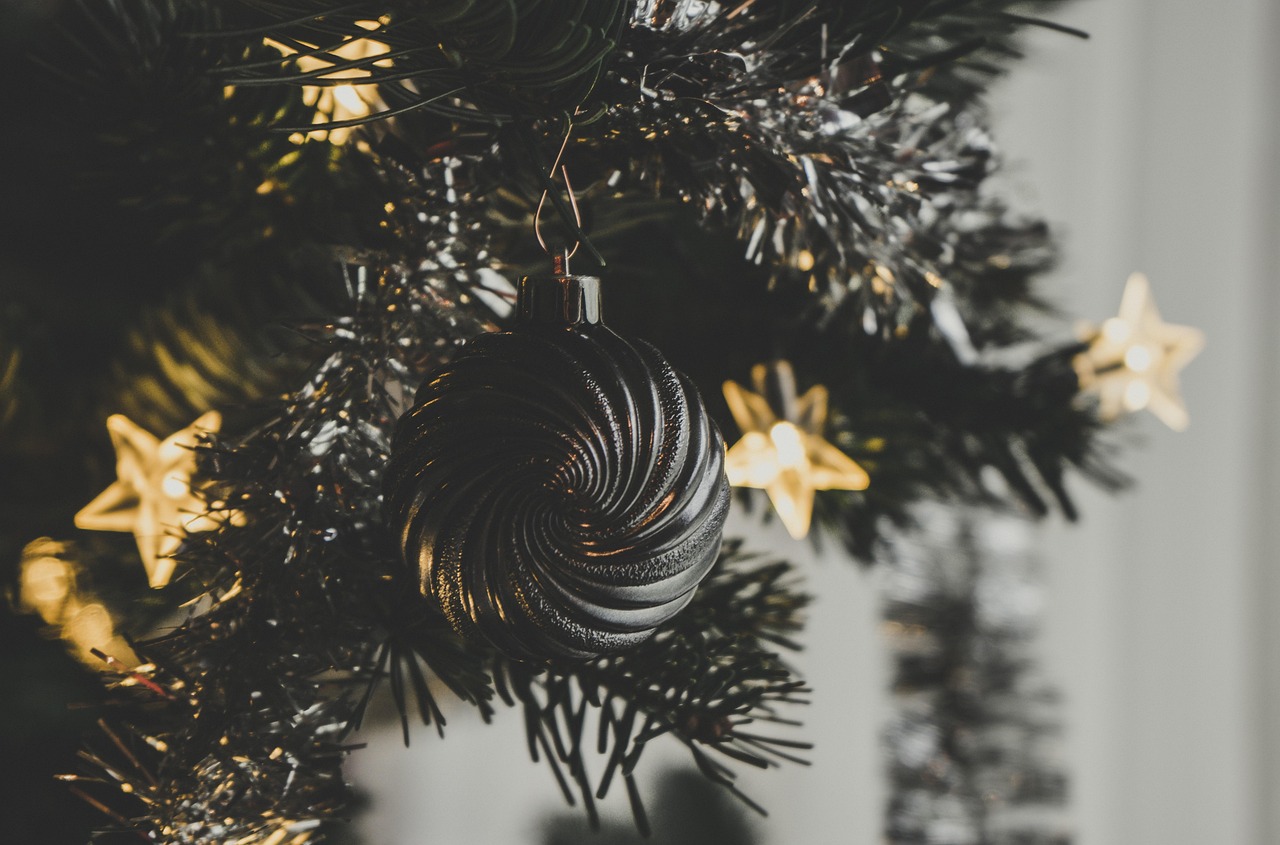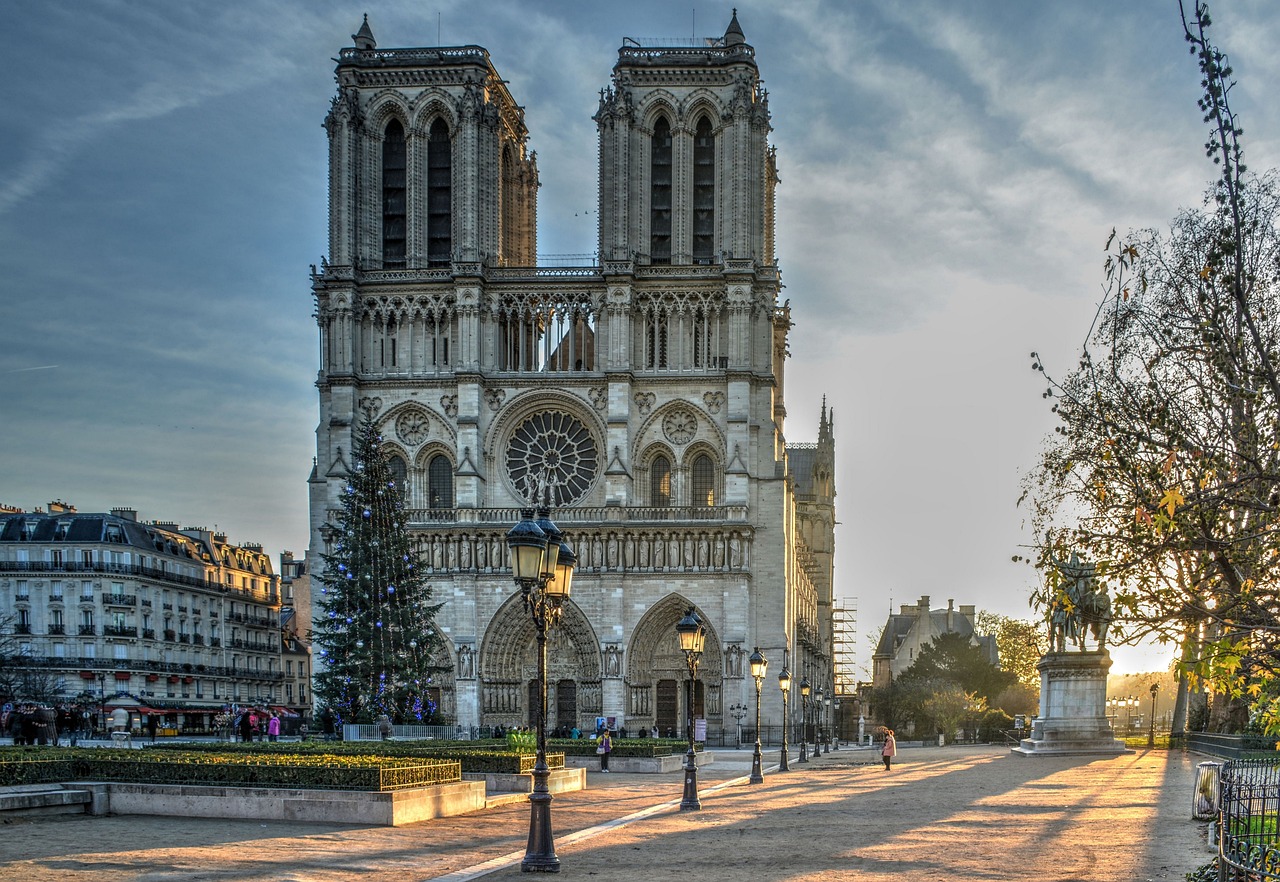Trees are central to the Christmas tradition as they symbolize life, hope, and renewal. Decorated evergreen trees have been a part of winter celebrations for centuries, representing the joy and spirit of the holiday season.
Historical Background of Christmas Trees
The custom of using trees during Christmas has deep historical roots. Evergreen trees, such as firs and pines, have long been associated with winter celebrations. Ancient cultures often used these trees to ward off evil spirits during the cold, dark months. As Christianity spread throughout Europe, these traditions evolved into the modern Christmas tree custom we know today.

The earliest documented use of a Christmas tree dates back to 16th century Germany. Families would bring a tree into their homes and decorate it with candles, fruits, and homemade ornaments. This practice gradually spread across Europe and eventually to the United States. By the 19th century, Christmas trees became popular in American households, solidifying their place in holiday traditions.
Symbolism of the Christmas Tree
The Christmas tree holds various meanings in different cultures. In general, it symbolizes everlasting life due to its evergreen nature. Here are some common interpretations:
- Hope and Renewal: The evergreen tree represents hope during the darkest months of winter.
- Light: The use of lights on the tree symbolizes the light of Christ coming into the world.
- Joy: Decorating the tree is a way for families to come together and celebrate joy during the holiday season.
Evolution of Decorations
Over time, decorations for Christmas trees have evolved significantly. Initially, natural elements were used, but as the tradition spread, so did the creativity surrounding tree decor. Here are some common decoration types:

| Decoration Type | Description |
|---|---|
| Candles | Originally used to represent light; now electric lights are more common for safety. |
| Ornaments | Ranged from fruits to glass baubles; now include a variety of materials and designs. |
| Tinsel | Introduced in the 19th century to reflect light; adds sparkle to the tree. |
| Garlands | Strings of beads or popcorn that add dimension and texture to the tree. |
These decorations not only enhance the visual appeal of the tree but also carry personal significance for many families. Each ornament may represent a memory or tradition shared among loved ones.
Regional Variations in Christmas Tree Traditions
Different regions around the world celebrate Christmas with unique variations of tree traditions. These differences reflect local customs and cultural influences. For instance, in some countries, households may display a “Yule Tree” made from branches instead of a full tree. In others, such as Italy, a Nativity scene may take precedence over the traditional Christmas tree.
In Scandinavian countries, it is common to place a small goat figure made of straw at the base of the tree. This goat symbolizes fertility and prosperity. In contrast, countries like Mexico celebrate with vibrant decorations, including papel picado (colorful paper banners) and piñatas alongside their trees.

The Role of Christmas Trees in Modern Celebrations
Today, Christmas trees are a staple in holiday celebrations across many cultures. Families often gather to choose their tree together, fostering a sense of unity and tradition. Furthermore, public displays of Christmas trees in town squares or shopping centers have become iconic symbols of the season.
In recent years, concerns over environmental sustainability have led to discussions about real versus artificial trees. Some families are opting for eco-friendly options or supporting local tree farms to ensure their traditions align with conservation efforts.
This evolution shows that while the symbolism remains strong, the ways in which trees are celebrated continue to adapt with changing values and societal norms.
Environmental Impact of Christmas Trees
The choice between real and artificial Christmas trees has sparked considerable debate regarding their environmental impact. Each option has its pros and cons, influencing how families approach this festive tradition. Understanding these impacts can help families make informed decisions that align with their values.

Real Christmas Trees
Real Christmas trees are often considered a more environmentally friendly choice when sourced from local tree farms. Here are some advantages:
- Renewable Resource: Christmas trees are grown on farms specifically for the purpose of harvesting. For every tree cut down, several new ones are planted.
- Carbon Sequestration: While growing, Christmas trees absorb carbon dioxide, helping to mitigate climate change.
- Biodegradable: After the holiday season, real trees can be recycled into mulch or compost, returning nutrients to the soil.
However, there are also some drawbacks associated with real trees:
- Pesticide Use: Some tree farms may use chemical pesticides that can harm the environment.
- Transportation Emissions: Transporting trees from farms to homes can contribute to carbon emissions.
Artificial Christmas Trees
Artificial trees present a different set of environmental considerations. Here are their strengths:
- Durability: Artificial trees can last for many years, reducing the need for annual purchases.
- No Pesticides: These trees do not require pesticides, making them a safer option for households.
- Variety: Artificial trees come in various styles and sizes, allowing families to choose according to their preferences.
On the other hand, there are significant concerns regarding artificial trees:
- Manufacturing Footprint: The production of artificial trees involves plastic and metal materials that have a high carbon footprint.
- Non-Biodegradable: Once discarded, they can take hundreds of years to decompose in landfills.
- Transportation Emissions: Similar to real trees, transporting artificial trees contributes to carbon emissions.
Cultural Significance of Christmas Trees Worldwide
Christmas trees hold unique cultural significance in various parts of the world. Each region incorporates local customs and traditions into their celebrations, making the Christmas tree a symbol of community and identity.
North America
In North America, Christmas trees often serve as the centerpiece of holiday decor. Families typically gather around the tree to exchange gifts on Christmas Eve or Christmas morning. Some traditions include:
- Tree Lighting Ceremonies: Many towns host public tree lighting events to kick off the holiday season.
- Personalized Ornaments: Families often create or purchase ornaments that reflect personal milestones or family history.
- Advent Calendars: Some families incorporate tree decorations into their advent calendars, adding a daily surprise leading up to Christmas.
Europe
European countries have rich traditions surrounding Christmas trees. For example:
- Germany: The tradition of the Christmas tree originated here. Families often decorate with handmade ornaments and candles.
- Sweden: The “Julbock,” or Yule Goat, is a common decoration alongside the tree, symbolizing good fortune.
- Iceland: The Yule Lads, mischievous figures from folklore, are said to visit homes during the holiday season, leaving gifts under the tree.
Asia and Africa
In some Asian and African cultures, Christmas trees may not be as prevalent but still hold special meanings. In countries like Japan, where Christmas is not traditionally celebrated as a religious holiday, decorative displays may feature a tree adorned with lights and ornaments as part of modern festivities.
African countries often blend local customs with Western traditions. For example, in Nigeria, families might use traditional fabrics and colors to decorate their trees, reflecting cultural heritage while celebrating the season.
The Future of Christmas Trees
The way people celebrate with Christmas trees continues to evolve alongside changing values regarding sustainability and cultural inclusivity. Innovations such as eco-friendly decorations and local sourcing of real trees point toward a more environmentally conscious future.
Additionally, as global cultures blend and influence each other, new traditions may emerge. This dynamic evolution ensures that the Christmas tree will remain a cherished symbol during the holiday season for generations to come.
Christmas Tree Traditions Across Cultures
The Christmas tree is not just an ornament in homes; it symbolizes unity, joy, and hope across various cultures. Each country has its unique way of incorporating trees into their holiday festivities, often blending local customs with the traditional Christmas celebration.
Germany: The Birthplace of the Christmas Tree
Germany is widely recognized as the birthplace of the Christmas tree tradition. The custom dates back to the 16th century when families would decorate evergreen trees with candles, fruits, and nuts. Today, German traditions have evolved but still hold deep cultural significance:
- Weihnachtsmarkt: Traditional Christmas markets held in towns often feature beautifully decorated trees that draw visitors from around the region.
- Adventskranz: Many German households create an Advent wreath with four candles and a small tree, lighting one candle each Sunday leading up to Christmas.
- Ornament Crafting: Families often make their own ornaments, carrying on the tradition of personalizing their trees.
United States: A Melting Pot of Traditions
The United States showcases a diverse range of Christmas tree traditions influenced by its multicultural population. Some notable practices include:
- National Tree Lighting: The lighting of the National Christmas Tree at the White House is a significant event that attracts thousands of attendees.
- Family Gatherings: Many families gather to choose and decorate their trees together, creating lasting memories.
- Tree Toppers: Common tree toppers include stars or angels, symbolizing hope and guidance.
Mexico: Las Posadas and Tree Celebrations
In Mexico, Christmas is celebrated with a series of festive events known as “Las Posadas,” which reenact Mary and Joseph’s search for shelter. The Christmas tree plays a vital role in the celebrations:
- Piñatas: During the holiday season, piñatas are often hung from branches of Christmas trees, adding a fun and interactive element to the celebration.
- Nativity Scenes: Many families set up elaborate nativity scenes near their trees, creating a focal point for their holiday decorations.
- Food and Celebration: Traditional foods are prepared, and families come together around the tree to share meals and celebrate.
The Role of Christmas Trees in Religious Celebrations
While many view Christmas trees primarily as secular symbols of the holiday season, they also hold significant religious meaning for many Christians. The tree represents eternal life and the promise of salvation through Christ.
Theological Symbolism
The symbolism of the Christmas tree in religious contexts can be seen in various ways:
- The Evergreen: Represents everlasting life and hope in Christ.
- Lighting the Tree: Lights symbolize Jesus as the light of the world, bringing illumination to darkness.
- Star or Angel Toppers: Often placed on tree tops to represent the Star of Bethlehem or angels announcing Christ’s birth.
Candlelight Services and Tree Decorations
Candlelight services held in churches during the Christmas season often incorporate beautifully decorated trees. Here are some common traditions associated with church services:
- Tree Lighting Ceremonies: Many congregations gather to light a church Christmas tree, symbolizing unity and community spirit.
- Ornament Dedications: Some churches encourage members to hang ornaments that represent their faith or personal stories.
- Singing Carols: Congregations often sing carols around the tree, enhancing the spiritual atmosphere of the celebration.
The Impact of Technology on Christmas Tree Celebrations
As technology advances, so do the ways in which people celebrate Christmas trees. Digital innovations have changed how families decorate and interact with their trees.
Smart Tree Technology
Many modern Christmas trees come equipped with smart technology that allows for customizable lighting and decorations. Some features include:
- Remote Control Lights: Lights can be controlled via smartphone apps, allowing users to change colors and patterns effortlessly.
- Synchronized Music: Certain trees can sync their lights to music, creating an interactive display that entertains guests.
- Voice Activation: Integration with smart home devices allows for voice-activated lighting and decoration changes.
Virtual and Augmented Reality Experiences
The rise of virtual reality (VR) and augmented reality (AR) has also impacted how families interact with their holiday decorations. These technologies provide innovative ways to enhance festive experiences:
- Virtual Decorating Apps: Families can use AR apps to visualize how different decorations would look on their trees before making purchases.
- Online Tree Decorating Parties: Virtual gatherings allow friends and family separated by distance to decorate together online.
- Interactive Displays: Some installations feature AR experiences that reveal hidden messages or decorations when viewed through a smartphone camera.
The integration of technology into Christmas tree celebrations reflects a shift toward modernity while maintaining cherished traditions. As families continue to adapt their practices, the spirit of Christmas remains at the heart of these celebrations.
Significance of Community and Togetherness
Beyond the decorations and technology, the Christmas tree symbolizes community and togetherness. Families and friends gather around the tree, sharing stories, laughter, and memories. This shared experience strengthens bonds and creates a sense of belonging during the holiday season.
Many communities also come together to celebrate with public displays of Christmas trees. These events foster a spirit of unity among residents and encourage social interaction. Here are some ways communities engage with Christmas tree traditions:
- Community Tree Lighting: Many towns and cities host tree lighting ceremonies, often accompanied by music, food vendors, and festive activities.
- Charity Drives: Some communities organize charity events where people can donate gifts or food while enjoying the festive atmosphere around a community tree.
- Decorating Contests: Neighborhoods may hold competitions for the best-decorated Christmas trees, encouraging creativity and friendly rivalry.
The Role of Christmas Trees in Family Traditions
For many families, the act of decorating the Christmas tree is an annual tradition that holds significant sentimental value. Each ornament often tells a story, representing different phases of life, travels, or milestones. This ritual not only enhances the festive atmosphere but also reinforces family identity.
Families often pass down ornaments through generations, creating a rich tapestry of memories. Here are some common practices associated with family traditions around Christmas trees:
- Ornament Trading: Some families engage in trading ornaments each year, adding new pieces to their collection that reflect current interests or experiences.
- Theme Decorating: Many families adopt specific themes for their tree decorations, such as color schemes or styles reflecting family interests.
- Memory Ornaments: Families create unique ornaments to commemorate significant life events, such as births, weddings, or graduations.
Environmental Consciousness and Sustainable Practices
As awareness of environmental issues increases, many families are becoming more conscious of their choices regarding Christmas trees. Sustainable practices are emerging as a way to celebrate while minimizing environmental impact.
Some families are choosing to adopt eco-friendly practices in the following ways:
- Buying Local: Purchasing trees from local farms reduces transportation emissions and supports community businesses.
- Recycling Trees: Many communities offer recycling programs for real trees after the holiday season, allowing them to be composted or turned into mulch.
- DIY Decorations: Creating ornaments from recycled materials encourages creativity and reduces waste.
Final Thoughts
The connection between trees and the Christmas tradition is both profound and multifaceted. From their historical origins to their modern-day significance, Christmas trees embody themes of hope, renewal, and community. They serve as a focal point for family gatherings and reflect personal histories through cherished decorations.
The evolution of Christmas tree customs illustrates how traditions adapt while maintaining core values. As technology continues to influence our celebrations, it will be essential for families to balance innovation with the preservation of meaningful rituals. Furthermore, embracing sustainable practices will ensure that future generations can continue to enjoy this beloved holiday tradition.
Ultimately, Christmas trees remain more than just seasonal decorations; they symbolize the spirit of togetherness, joy, and love that defines the holiday season. Whether adorned with traditional ornaments or high-tech lights, they will continue to play a vital role in holiday celebrations around the world.
